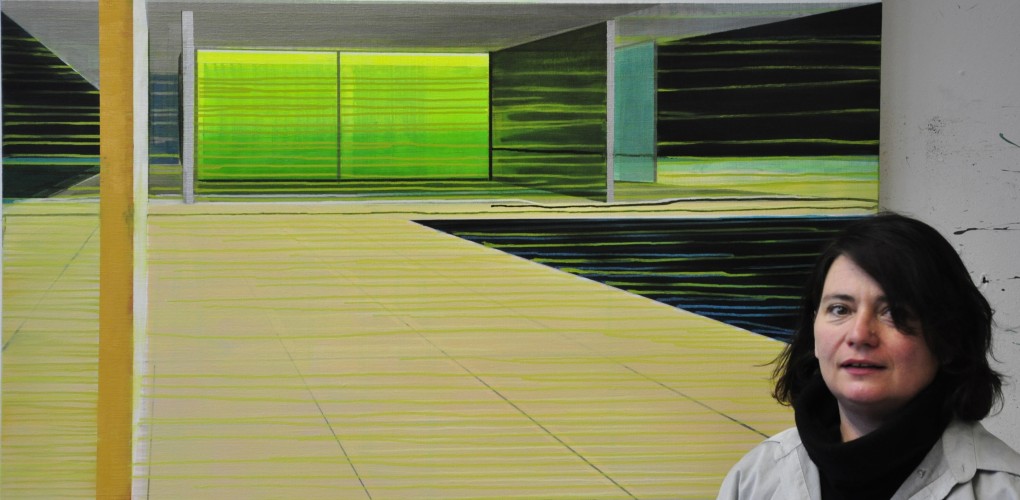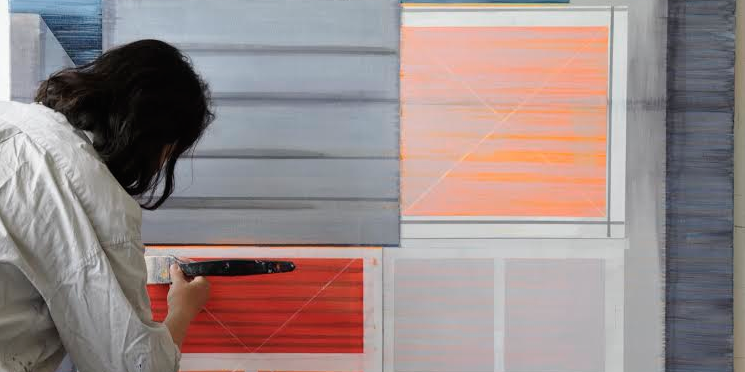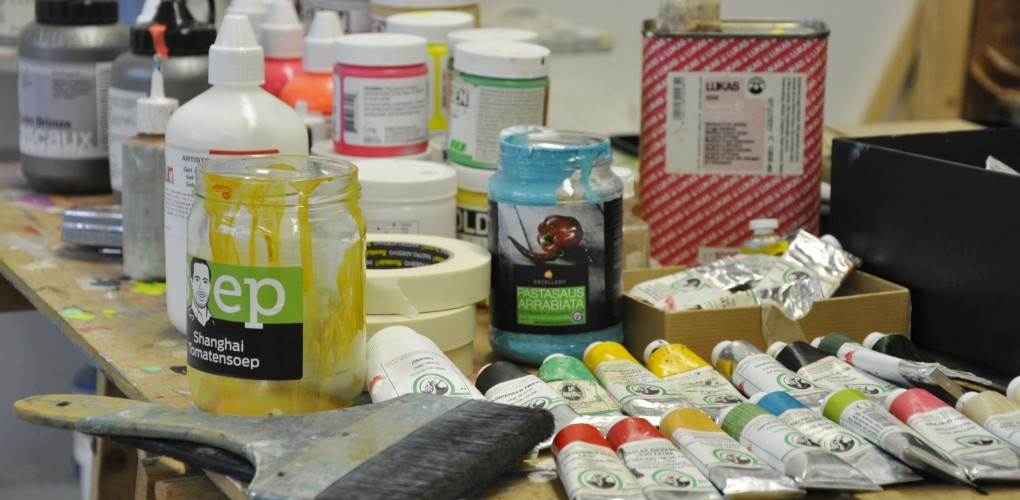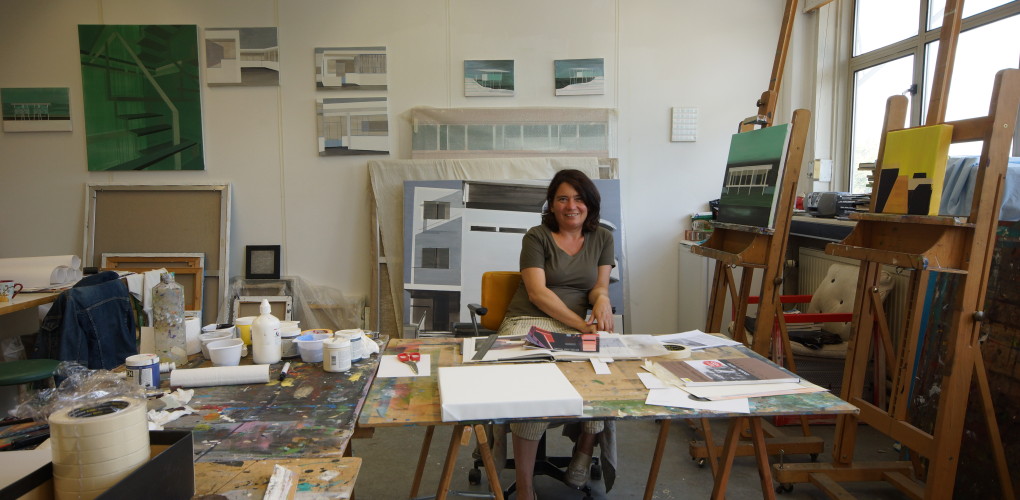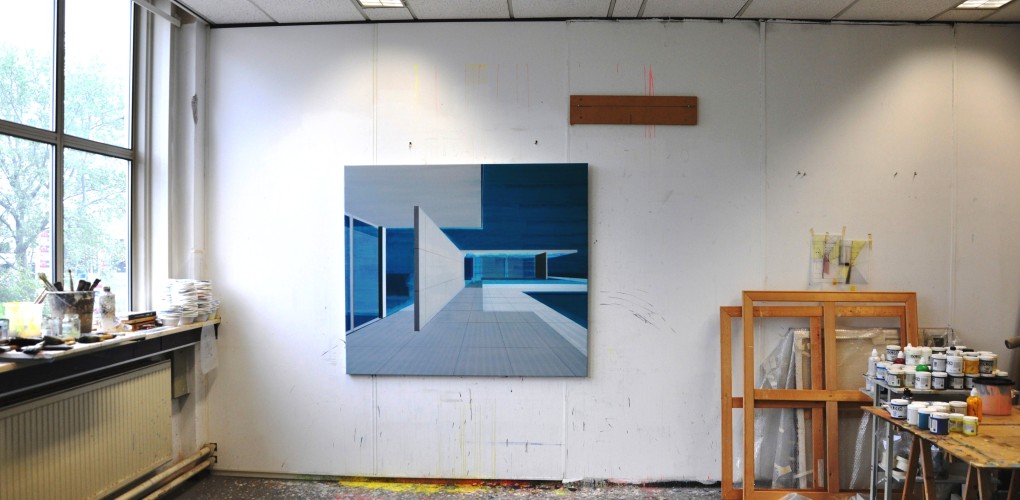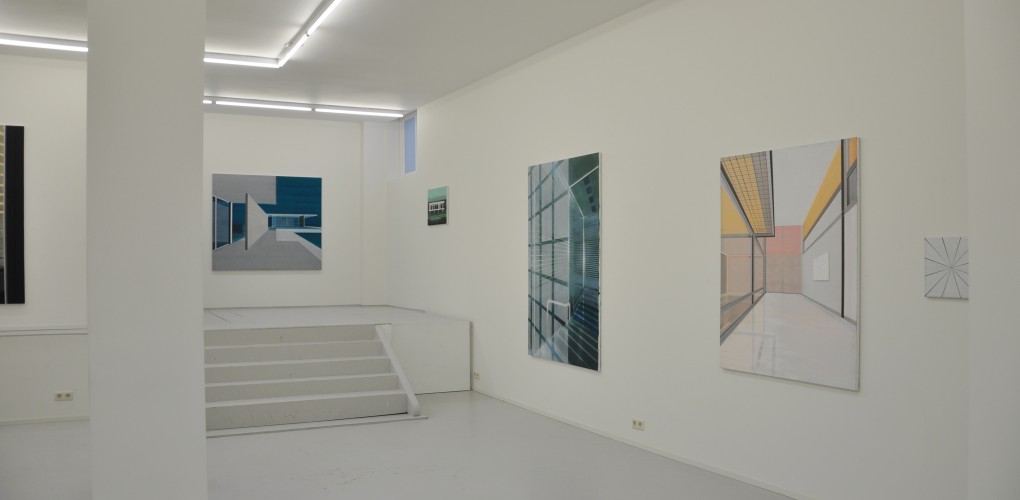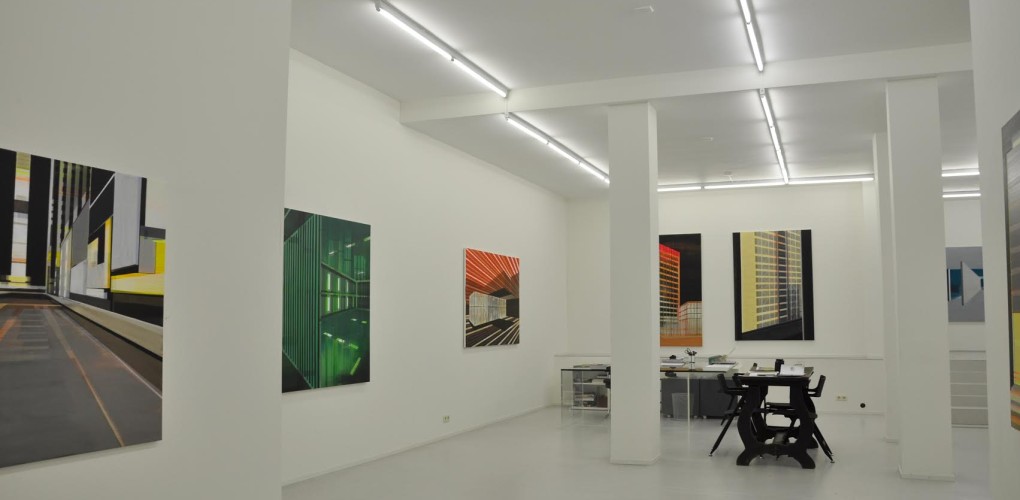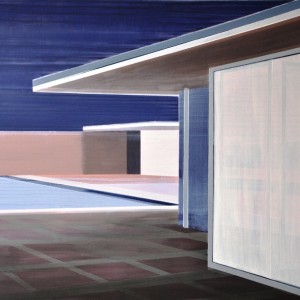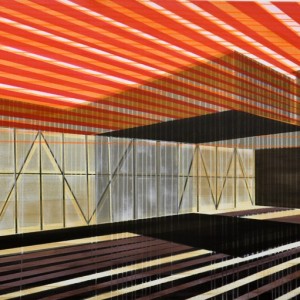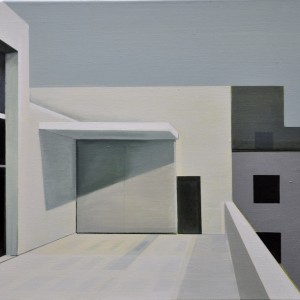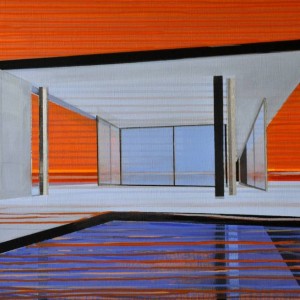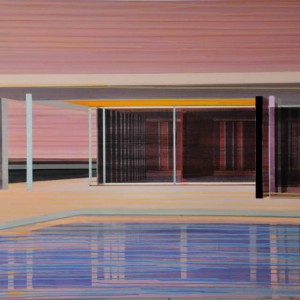Inside the Studio
 Cécile van Hanja
Cécile van Hanja
What are the major themes you pursue in your work?
The most important theme in my work is the exploration of the influence of the public domain on private life. As an inspiration source, the surrounding metropolitan works both for and against creating art in my studio, which can be seen as a metaphor for an inner experiment. Although I have trouble shutting out the hectic life that comes with it, I’m at the same time fascinated by the anonymous charisma of modern architecture. Within the structure of repeating facades of glass and concrete I can imagine a geometric world full of suspense, a multicoloured labyrinth of spaces and look-throughs in which it is not exactly clear whether it is inside or outside. The question arises if we as observers are part of the structure or excluded from it? In other words, can our private life penetrate into these anonymous constructions?
At the same time, the regular rhythm of horizontals and verticals of the modernistic architecture enables me to do research of the space on a flat surface. The thin layers of paint give more depth and confusion. The transparent floors and walls, with reflections of opposite walls, together with the perspective lines and vanishing points, like rational benchmarks, lead to an irrational and intuitive way of thinking, that force to only experience, accept a given space, without being able to reason it out.
What was the best advice given to you as an artist?
The best advice that was given to me was at art school (Rietveld academie in Amsterdam) and that was: Be faithful to your own ideas and be as original as possible.
Prefer to work with music or in silence?
I prefer classical music; especially the music of Johann Sebastian Bach gives me the inner rest to compete with hectic outside world. Other music I like is: Tous les matins du monde; Une jeune fillette; Les pleurs for 2 basse de viole; and Mendelssohn- Songs without words.
If you could only have one piece of art in your life, what would it be?
For me it is impossible to have only one piece of art. Every art piece stands in tradition, and is a reaction or continuation on former art pieces. It is unthinkable to value art without this history, but if I have to choose one I would go for the Girl Reading A Letter At An Open Window by Johannes Vermeer.
